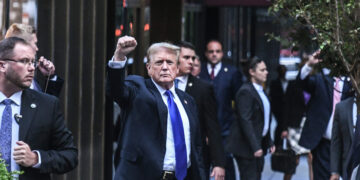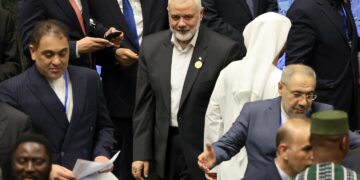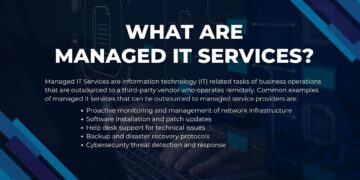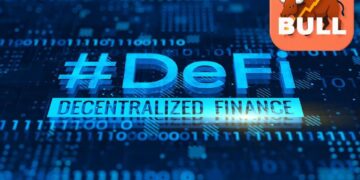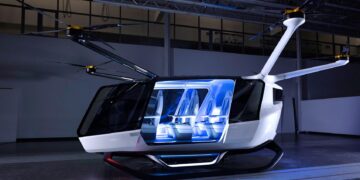In a move that has sparked both intrigue and anticipation within the defense community, former President Donald Trump has appointed a new overseer for critical technologies at the Pentagon: the enigmatic figure known as “The DoddFather.” As the landscape of national security increasingly intertwines with cutting-edge innovations, the responsibilities that come with this role are as formidable as the technologies themselves. This article delves into the implications of this appointment, exploring the potential impact of Dodd’s leadership on the future of defense strategies and technological advancements, as well as the broader political and military ramifications of such a pivotal choice. Join us as we unpack the significance of this decision and what it may mean for the evolving priorities at the heart of the Pentagon.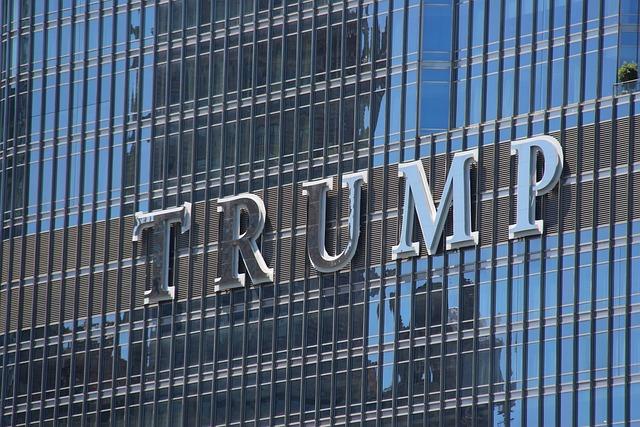
The Strategic Vision Behind Trumps Choice for Critical Tech Oversight
In a bold move that combines experience with innovation, Trump’s decision to appoint a seasoned strategist for critical technology oversight signals a fundamental shift in how the Pentagon aims to address the rapidly evolving landscape of defense technologies. The choice of ‘The DoddFather’ aligns with a vision that prioritizes adaptability in the face of emerging technologies. This appointment is set against the backdrop of intensifying global competition, particularly with adversaries who are swiftly advancing their technological capabilities.
The primary objectives of this strategic vision include:
- Enhancing Cybersecurity: With increasing cyber threats, oversight will focus on strengthening the Pentagon’s defenses to protect vital systems.
- Fostering Innovation: Encouraging collaboration with private sector leaders to drive advancements in artificial intelligence, robotics, and other critical sectors.
- Streamlining Acquisition Processes: Simplifying bureaucratic hurdles to accelerate the integration of cutting-edge technologies into existing defense systems.
To facilitate effective oversight, a structured approach will be adopted. The following table outlines key strategies and their expected outcomes:
| Strategy | Expected Outcomes |
|---|---|
| Interagency Collaboration | Improved resource allocation and efficient information sharing. |
| Public-Private Partnerships | Accelerated technological advancements and innovation spillover. |
| Investment in Talent Development | Preparation of a skilled workforce ready to tackle future challenges. |

Evaluating The DoddFathers Expertise in Modern Defense Challenges
In an era where defense strategies must adapt to rapidly evolving global threats, the appointment of a veteran strategist like ”The DoddFather” signals a significant shift in how the Pentagon approaches modern warfare. His extensive career is marked by a profound understanding of technological advancements and their practical applications in defense. Key areas of focus include:
- Cybersecurity Initiatives: Developing robust systems to safeguard sensitive military information.
- AI Integration: Leveraging artificial intelligence to enhance decision-making processes.
- Supply Chain Resilience: Ensuring that military supply chains are secure and efficient against potential disruptions.
Moreover, his leadership brings a fresh perspective by encouraging collaborative partnerships between technology firms and military branches. This approach not only fosters innovation but also creates a diverse ecosystem of ideas and solutions. The fusion of traditional military strategies with modern technology under his guidance can potentially reshape project management and operational methods within the Department of Defense. A detailed overview of strategic priorities includes:
| Strategic Priority | Goals | Timeline |
|---|---|---|
| Cyber Defense Enhancement | Establish a comprehensive cybersecurity framework | 1-3 years |
| AI Research Funding | Invest in cutting-edge AI technologies | Ongoing |
| Military-Technology Partnerships | Form alliances with leading tech firms | 2 years |
As “The DoddFather” spearheads these initiatives, the focus will also be on fostering a culture of innovation within the defense community. His expertise is expected to bridge gaps between military objectives and rapidly changing technological landscapes, paving the way for a more secure and resilient national defense strategy that empowers personnel and enhances overall military effectiveness.
Implications of Leadership Transition on Pentagon Innovation Policies
The recent appointment of a new leader to oversee critical technologies at the Pentagon signals significant changes in innovation policy and direction. With a figure like ‘The DoddFather’ at the helm, the leadership transition may reshape the Pentagon’s approach to emerging tech. Emphasizing a balance between national security and technological advancement, the incoming leadership could prioritize initiatives that foster collaboration between government agencies and the private sector.
During this transition period, the potential for realigning resources and funding towards specific technological domains becomes evident. Key focus areas may include:
- Artificial Intelligence: Enhancing military capabilities through intelligent systems.
- Cybersecurity: Fortifying defenses against increasing cyber threats.
- Autonomous Systems: Developing unmanned vehicles for various operational scenarios.
- Advanced Materials: Researching innovations that could lead to superior defense equipment.
As ’The DoddFather’ takes on this pivotal role, it is crucial to analyze how expectations may shift within the defense industrial base. The leadership transition could encourage a leaner, more agile policy framework that fosters quicker adaptation to technological advancements. To understand the implications better, the following table outlines potential shifts in focus before and after the transition:
| Focus Area | Before Transition | After Transition |
|---|---|---|
| Funding Allocation | Established defense contractors | Emerging tech startups |
| Policy Approach | Regulatory oversight | Collaboration and agility |
| Partnerships | Limited industry engagement | Broader coalition with tech innovators |

Recommendations for Fostering Technological Advancements in National Security
To effectively harness technological advancements within the realm of national security, a multifaceted approach is crucial. First, fostering a culture of collaboration between government agencies, private sector companies, and academic institutions can enable the rapid exchange of ideas and innovations. Establishing dedicated joint task forces or partnerships can facilitate public-private collaboration that is essential for addressing emerging threats and ensuring cybersecurity. Furthermore, promoting forums for discussion and knowledge-sharing can elevate the strategic dialogue necessary to remain ahead of adversaries.
Investment in research and development should be prioritized, with a focus on cutting-edge areas such as artificial intelligence, quantum computing, and cybersecurity solutions. By allocating funding toward these key sectors, the government can integrate advanced technologies into defense strategies effectively. Implementing initiatives such as innovation prizes and grants for startups that develop critical technological solutions can also drive competition and spur breakthroughs. Additionally, creating an accelerated pathway for the acquisition of promising technologies can streamline deployment and mitigate risks associated with traditional procurement timelines.
Education and training programs must also evolve to prepare the workforce for the challenges posed by new technologies in national security. Emphasizing STEM education and offering specialized training for military and civilian personnel can enhance the overall capability of the workforce. Deployment of virtual reality and simulation technologies in training programs can provide hands-on experience in a controlled environment. Moreover, establishing mentorship opportunities within the technology community can nurture talent and foster innovation. To visualize the importance of skilled personnel in defense, consider the following table:
| Technology Area | Required Skills | Impact on National Security |
|---|---|---|
| Artificial Intelligence | Data Analysis, Algorithm Development | Enhanced Decision-Making |
| Cybersecurity | Network Defense, Threat Analysis | Protection against Cyber Attacks |
| Quantum Computing | Complex Problem Solving, Programming | Revolutionizing Encryption |
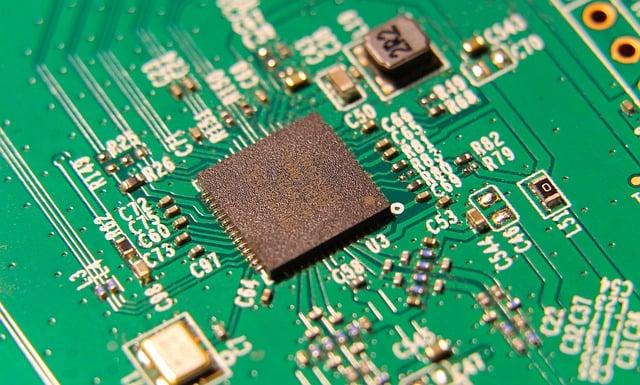
Key Takeaways
As the sun sets on this pivotal appointment, the Pentagon prepares to navigate the complexities of modern defense with a seasoned strategist at the helm. By selecting ‘The DoddFather’ for such a crucial role, Trump signals a commitment to innovating within the realm of critical technologies, potentially reshaping the future of national security. The intersection of experience and vision will undoubtedly play a key role in how the U.S. tackles emerging threats and leverages technological advancements. As we move forward, all eyes will be on this new chapter at the Pentagon, eager to see how this strategic leadership unfolds in an ever-evolving global landscape. In the coming months, the impact of this decision will surely resonate, carving a path for the future of defense technologies and reshaping the dynamics of power in an increasingly digitized world.








